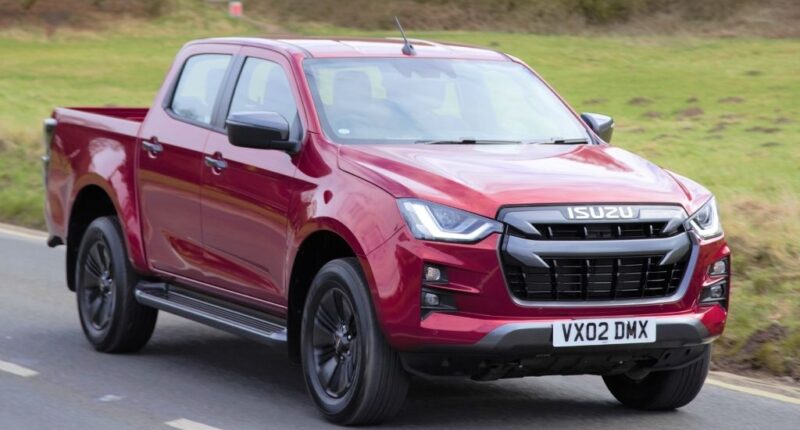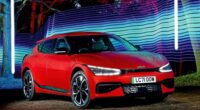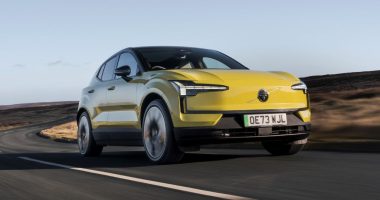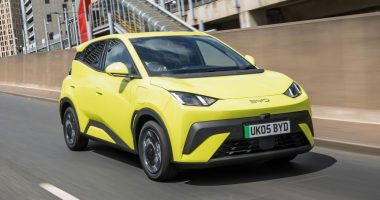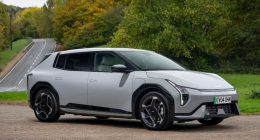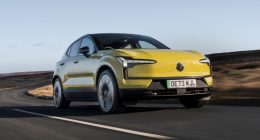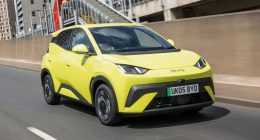The pick-up market has never been busier. This year alone Ford will launch its new Ranger and Ranger Raptor, and Volkswagen its Amarok. And then there is the all-new Isuzu D-Max – a “tough, strong and built to go the distance” truck that vows to be a big improvement on its predecessor. Time to test that theory.
Table of Contents
ISUZU DOING WHAT IT DOES BEST
The D-Max is the one and only vehicle Isuzu builds and markets in Great Britain and Northern Ireland, so with no distractions by way of other cars to worry about, there should be no excuses for this all-new iteration being anything but good. If the D-Max wasn’t a serious draw before now then perhaps being told Isuzu collaborated with Mazda on this model might help alter perceptions. Certainly, bosses at Isuzu think so because it is targeting 10,000 UK D-Max registrations by 2025. To reach that figure, all bases are covered, from a basic ‘Utility’ spec to a feature packed ‘V-Cross’ edition as tested here. Regardless of trim, and whether you want a single, extended or double cab option, the same 1.9-litre, 4-cylinder turbo diesel is found under the bonnet. Rivals outperform the 162bhp motor but the way engineers have geared the D-Max ensures it has all the pulling power you will need, laden or unladen, from a standing start.
V-CROSS: A CLOSER LOOK
The D-Max is a pretty looking pick-up – a nod to the Mazda influence – and arguably more modern and appealing than the one it replaces. To narrow the gulf that previously existed between it and high-tech alternatives like Toyota’s Hilux Invincible and Ford’s Ranger Wildtrak, the V-Cross gets all the kit found on the cheaper ‘DL40’ but adds updates by way of a metallic gunmetal grey finish for the angrier front grille, alloy wheels and fixed side steps. LED tech makes an appearance in the headlamps for style and substance reasons, with this also used for the moody daytime running signature as well as the blocky tail-lights. Isuzu badging writ large across the tail-gate enhances the look. Much less easy to spot is that long, horizontal bonnet that’s now 30mm higher than before, while the D-Max’s footprint shrinks by the same amount.
THE CABIN IS BANG UP-TO-DATE
The change on the inside of the latest D-Max is a world away from what current owners are familiar with. For one, the general layout of the dashboard, nobs and part-digital driver display all have a more sophisticated and cohesive look about them. Again, you can’t help but feel Mazda took the lead here. Hard plastics aren’t too hard to find but their frequency has been reduced considerably this time around. Colour is injected by way of silver trim on the steering wheel and around the air vents, with this carried over to the piano key-shaped switches on the centre console that operate the heating and ventilation. There’s lashings of piano black plastic, too, and the leather finish for the seats in ‘V-Cross’ examples and the fancy dual-zone climate control is now on a par with what is currently found elsewhere in this class.
ONE ENGINE. TWO TRANSMISSIONS
Unchanged is the 1.9-litre diesel that powers the D-Max – and that’s an odd decision. It never was the quietest of motors and that goes against the grain of what Isuzu is championing here: comfort, luxury and civility. There is no end of noise from underneath the bonnet during acceleration (0-62mph takes 13 seconds in case you were wondering) although the automatic transmission is smooth and primed to kick down if you need to call on the engine’s 266lb ft of torque at a given moment. When you get up to cruising speed things start to settle down and at a constant speed you should achieve Isuzu’s claimed 33 miles-per-gallon figure. The suspension is new and uses trusty leaf springs at the rear hence the 1,090kg payload. The trade-off is a firm ride that is well suited to smooth Tarmac but turns choppy and jittery on rutted roads. Plus points include light steering, a tight turning circle and full parking sensors.
WHAT’S IT LIKE AS A WORKHORSE?
It’s a proper thoroughbred. One area the D-Max has never played second fiddle to other pick-ups is off road driving and that remains the case. A stiffened chassis, greater axle articulation and steel plated protection for the underside join forces with standard all-wheel-drive and low-range gears to give the D-Max proper go-anywhere ability. Buyers of pricier examples benefit from a mechanical differential integrated into the rear axle with hill descent control and hill start assist sure to prove their weight in gold when the going gets tough. Improving the arsenal of safety kit has clearly been high on the priority list for the Japanese company as well. 4×4 versions incorporate Trailer Sway Control – a system that slows the vehicle’s speed gradually by using sensors to detect swing. Forward collision warning, auto emergency braking, traffic-sign recognition and a speed limiter are all included in the price, too. Self-changing models come with adaptive cruise and lane assist, so it’s little wonder the D-Max scored a five-star Euro NCAP rating.
PROS AND CONS
+ Astoundingly good value for money
+ Seriously capable off the beaten track
+ Equals rivals for load and towing ability
– Interior quality still trails the best
– Engine is not the spriteliest
– Refinement could be better
LOADBED: Other than its off-road prowess, the reason people opt for a pick-up is towing capacity and load bed volume. The D-Max maintains its ability to haul a three-and-a-half-tonne braked trailer and can carry a payload a shade bigger than a tonne over the rear axle. Underbody protection has also been beefed up for greater peace of mind when travelling over uneven surfaces and rocky ground.

STYLING: Design counts for a lot in the pick-up market and the D-Max is arguably one of the best looking at the moment. In ‘V-Cross’ guise the front grille and lower skid plate, side steps, mirror caps and door handles are finished in gun metal grey with this repeated on the 18-inch alloys. Customers also have a choice of eight body colours, with ‘Spinel Red’ one of seven premium shades that weigh in at £600.

INTERIOR: Equipment varies widely across the 4-model D-Max range, with most private buyers set to go for either ‘DL40’ or our range-topping ‘V-Cross’ derivative. The latter is lavished with leather and a mix of soft materials, 8-way electronically adjustable front seats and a responsive 9-inch multimedia display with Android Auto and Apple CarPlay. The graphics could be slicker but it is a reasonably decent system.

PRACTICALITY: The Achilles’ heel of all double cab pick-ups is rear passenger space and while it doesn’t re-write the rule book, the D-Max is an improvement on the previous model as shoulder room is up by 20mm and the longer wheelbase has feed up some extra foot space. Pushing the B-pillars forward aids access as the doors can open wider than ever. Double cabs also get 8 grab handles and 10 cupholders.

SPECIFICATION
Price: £39,310 (as tested)
Engine: 1.9-litre, 4cyl turbo diesel
Power/torque: 162bhp/266lb ft
Transmission: 6-speed automatic, four-wheel drive
0-62mph: 13 seconds
Top speed: 112mph
Economy/CO2: 30.7mpg/241g/Km
